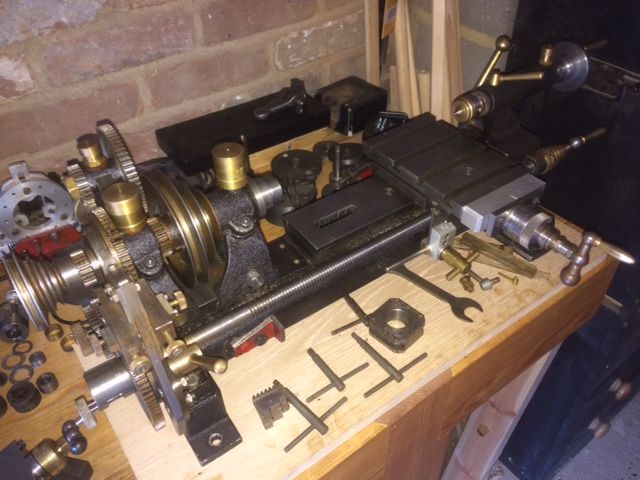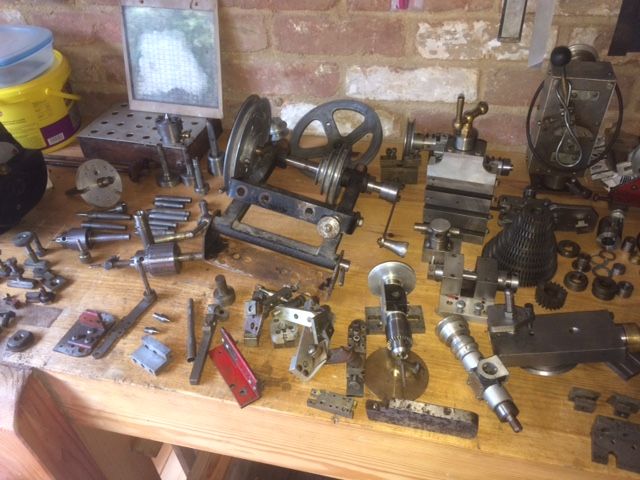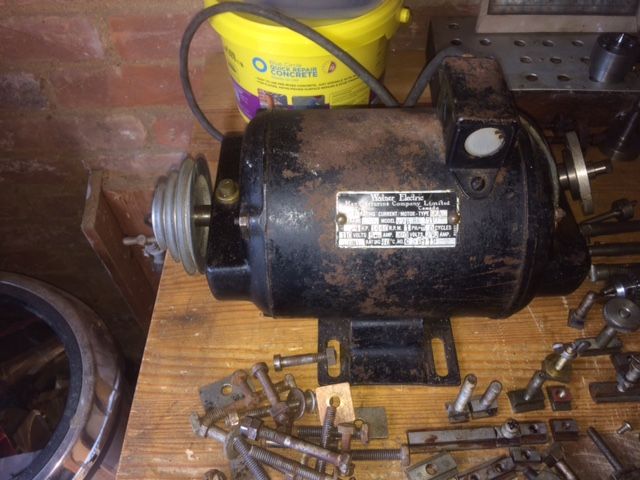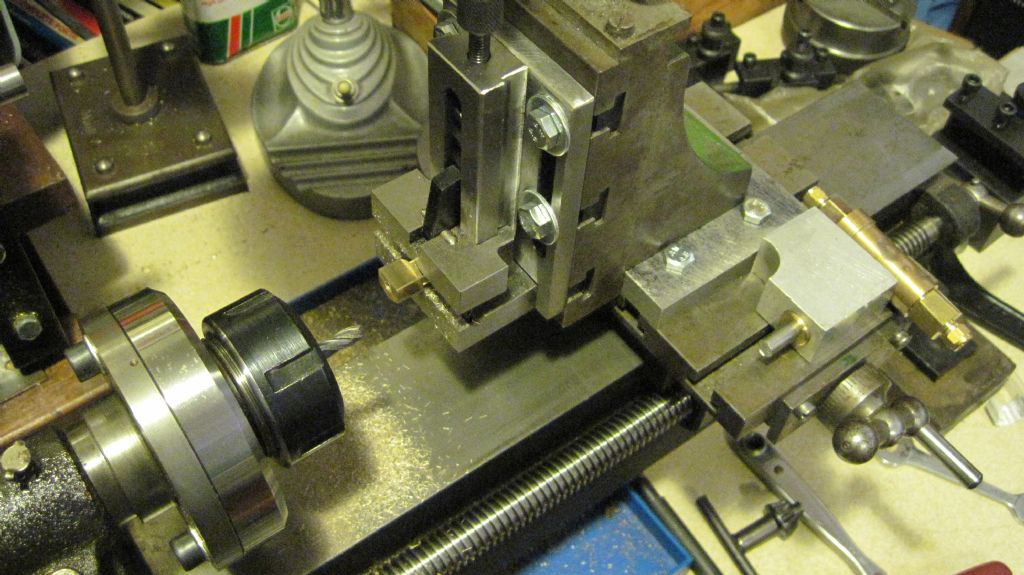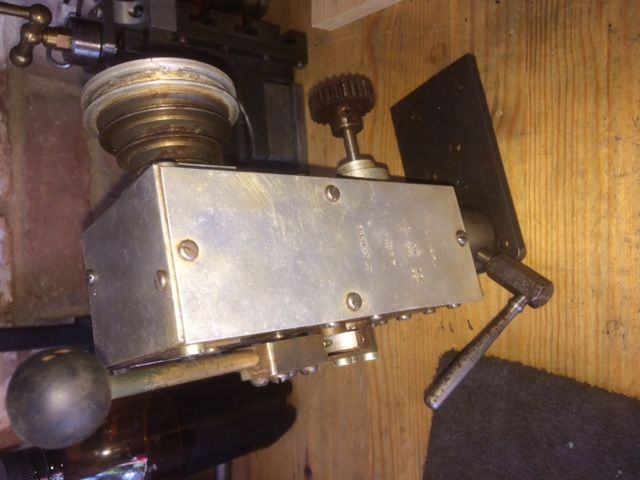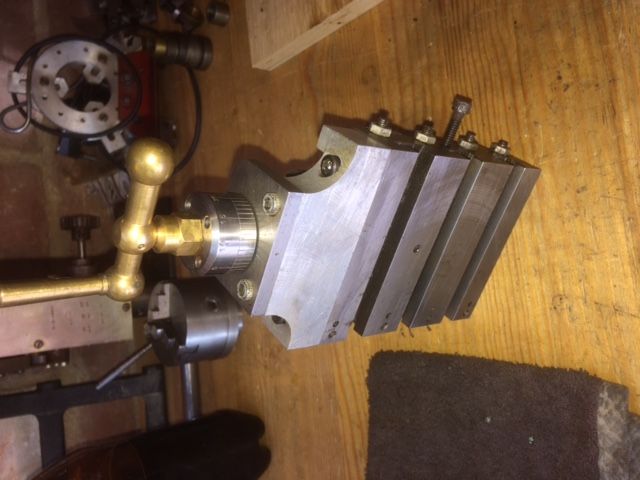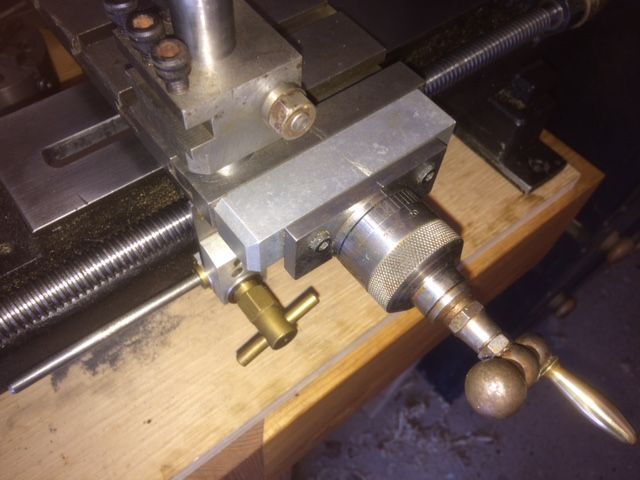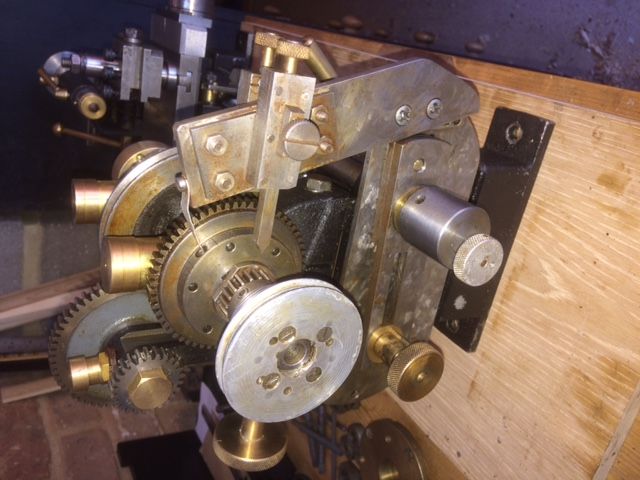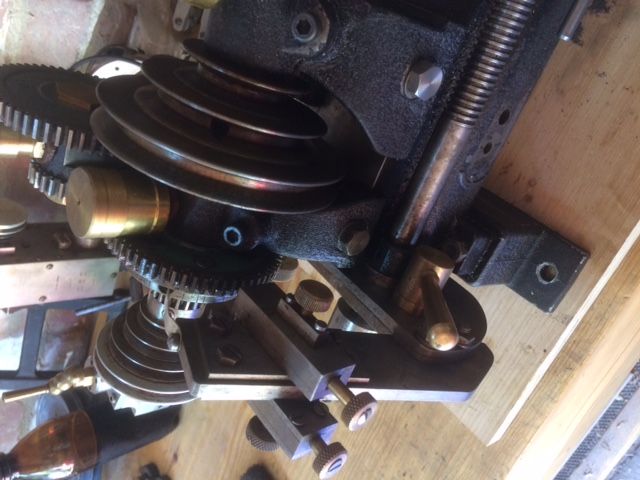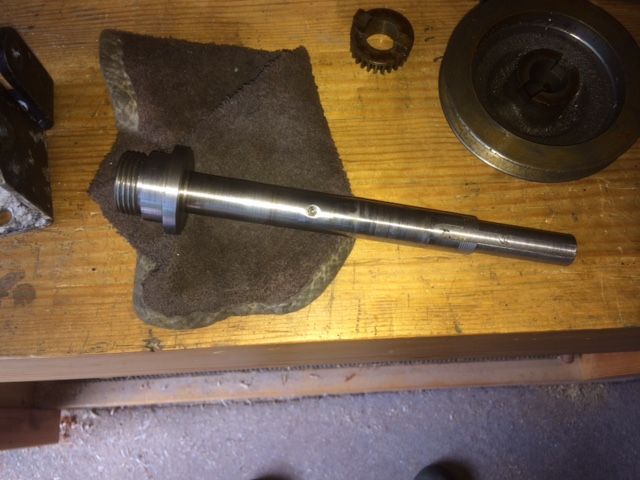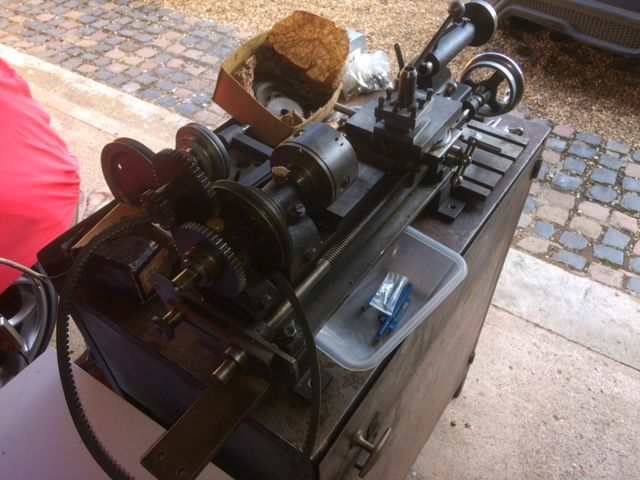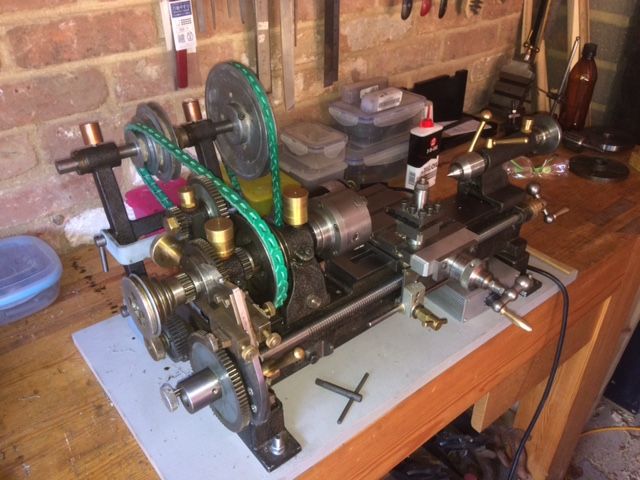My EW is the plain-bed version, was second-hand when my Dad bought it for my 18th birthday-present, ooh, err, last century; but I was delighted to learn many years later, from 'lathes.co', that its has all the original fittings and extras except the change-wheel guard, which the photos suggest was a casting.
The EW lathes were not fitted with clutches on the drives, and the lead-screw was permanently engaged for both feed and screw-cutting. NB: the change-wheel set supplied is not suitable or intended for power-feed, only screw-cutting.
I don't find screw-cutting to a shoulder to be too much of a problem – though I might baulk at large batches. I simply turn the machine by hand, using the big pulley on the countershaft as a (rather mucky) handle. With the motor unplugged of course! (And the motor belt loosened to reduce the effort needed.)
'
I do have a budget QCTP that just about fits but long before such things were available made a set of little tool-holders from short lengths of rectangular BMS bar, to hold tool bits ground from worn-out centre-drills and the like. The tool-holes are inclined, giving easy though limited height adjustment.
'
Watch out for the T-slots. They are thin, and one on my vertical slide, for which I made a rather crude but effective vice, came complete with a piece broken out. Rather than separate T- nuts I made T-strips to distribute the load along the slot.
Another point regarding the vertical slide. It is meant to fit on the boring-table, of course, but its single central bolt is not conducive to keeping square-ness of setting, nor to fair stresses on the T-slots. Not believing in modifications to the original metalwork other than for repairs, I made two L-shaped steel blocks each clamped by two T-bolts to the table, forming a 3-sided "nest" abutting against the (OEM) machined body of the slide.
'
Presently my EW is resting – a Myford ML7 does most of the work, a Harrison L5 is there for the bigger stuff; an Axminster "Micro-lathe" awaits a suitable bench.
It is resting though because the spindle and headstock castings are worn to the extent you can see the chuck "jump" when applying a cut, and it reveals what if anything is the weak point of this otherwise fine little lathe – others might find this too.
The spindle runs directly in the castings; and they are not very thick-walled.
The "obvious" solution is to bore out the castings, turn the spindle down, and insert a thin-walled bush, split to match the original adjustment, Unfortunately there is very little metal available for removal from either without weakening the headstock or compromising the spindle's fine-pitch thread for its retaining/ adjusting nuts. I investigated commercially-made bearing-bushes, but found none thin-walled enough to use without creating serious problems.
I think all I can do is combine line-boring the headstocks with skimming the spindle, but removing only just enough for very thin-walled bushes turned from leaded gun-metal – that material as the spindle is not hardened. I would have to rebore and sleeve the heftier tailstock casting too, to ensure concentricity as much as to correct its own wear.
Thinking how to bore two castings with slots cut along them, I realised I would have to make cast-iron – or possibly aluminium – shims to fill the slots and give nearly-uninterrupted cuts.
The spindle's thrust-flange had also worn a recess in the headstock-face, but I made a thrust-washer with a tiny anti-rotation pin locating in the adjustment slot, to overcome that.
'
Chromed handles, as mentioned right back several pages ago? The handles on my example show no sign of ever having been plated, even allowing for years of wear. I don't deny they might have been at least on some of these lathes, though, and the 1940s-50s were a great time for finishing all sort of machines in black-crackle paint and chrome.
SMF–
At least yours came with the original countershaft!
Pity someone thought fit to put that hole in the bed, and I wonder why whoever did it, wanted the vertical-slide in a fixed location anyway.
I did not know Stringer made a gap-bed version of this lathe.
Nigel Graham 2.


